Olympus E-520
-
-
Written by Gordon Laing
Olympus E-520 vs Canon EOS 450D / XSi
Olympus E-520: JPEG versus RAW
We photographed the scene here in RAW + Large Fine JPEG mode and have presented crops below from each file for comparison. The RAW file was converted using Olympus Master 2.05 using its default settings, saved as a 16-bit TIFF, then opened in Photoshop. This was then reduced to 8 bits and processed the same way as the original JPEG for presentation here. There’s virtually no difference here between the processed RAW file and in-camera JPEG, although to be fair, the Master software was using the camera defaults. Of course the flexibility of shooting in RAW is greater latitude for adjustments, and the Master software lets you change plenty of settings including the colour style and noise filter – this can be a great way of experimenting with different processing settings before applying your favourites in-camera. Now to see how the camera performed under studio conditions, check out our Olympus E-520 resolution results. |
Olympus E-520 JPEG with Zuiko Digital 14-42mm |
Olympus E-520 RAW with Zuiko Digital 14-42mm | |
 | 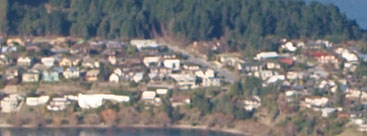 | |
f8, 100 ISO |
f8, 100 ISO |
Olympus E-520 results continued…
 |
vs Pentax K200D outdoor scene |
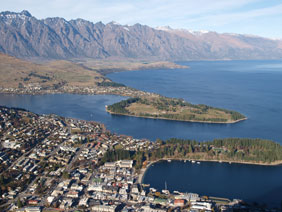 |
To compare real-life performance we shot the same scene with the Olympus E-520, Canon EOS 450D / XSi and Pentax K200D within a few moments of each other using their Aperture Priority modes, best quality JPEG and lowest ISO settings. The lenses on each camera were set to f8 and adjusted to deliver the same vertical field of view – see note below.
The E-520 was fitted with the Zuiko Digital 14-42mm, the Canon with the EF-S 18-55mm IS and the Pentax with the DA 18-250mm; note this was the only lens Pentax had available for our review.
The image left was taken with the Olympus E-520 and 14-42mm lens at 20mm f8 and a sensitivity of 100 ISO; the original JPEG measured 5.09MB. The crops are taken from the upper left, centre, lower right and lower left portions of the originals and presented here at 100%.
Note: The Olympus E-520, like all Four Thirds DSLRs, captures images with a 4:3 aspect ratio that’s narrower than the 3:2 aspect ratio of most DSLRs including both the Canon and Pentax models here. In this test we adjusted each lens to deliver the same vertical field of view, so we’re not using the full width of the Canon and Pentax images. As such, the 450D / XSi and K200D are only using 10.8 and 8.9 of their total Megapixels here respectively.
Also note all three cameras were using the same 1/200 shutter speed under the same lighting conditions. This was the metered exposure for the Olympus and Canon bodies, but required +0.3 EV compensation from the K200D.
The crops from the three cameras below illustrate more about the differences between lenses and image processing than sensor types or resolution. The Olympus E-520 and Canon EOS 450D / XSi crops look roughly similar, although we’d say the Canon has a very slight edge on resolved detail, especially in bright highlight areas. If you look closely at the rooftops in the second row and the bright walls in the fourth, you’ll notice a little more detail in the Canon crops which is blown on the E-520s, although this is serious pixel peeping and there’s really very little in it. Optically, we’d say our copy of the Canon kit lens is performing slightly better in the upper left corner, while our copy of the Olympus kit lens is doing better in the lower right.
Then there’s the crops from the Pentax K200D which look completely different to the Olympus E-520 and Canon 450D / XSi – and remember all three shared the same exposure and lighting conditions. First of all, the Pentax DA 18-250mm lens supplied for this test is performing much better than the kit lenses of the other two bodies, especially in the corners. We’d like to have tested the K200D with the more typical DA 18-55mm, but the DA 18-250mm was the only lens Pentax could supply for our review. That said, super-zooms are often optically compromised in favour of their long focal range, but there’s clearly little to complain about on this model. As also seen on our Pentax K20D review, the DA 18-250mm is capable of delivering very sharp results across the frame.
Beyond superior optics though, what you’re seeing below is also the result of a quite different image processing strategy. While the Canon and Olympus bodies are being quite refrained, the K200D is going all-out to deliver punchy, consumer-friendly images with everything turned-up several notches; you might like the effect, but we’d say Pentax has arguably gone a little too far. Certainly it’s possible to achieve a similar effect with the other cameras by boosting their settings, and you can of course tone down the K200D if you prefer. But you can’t sharpen a lens which is soft in the corners, and in this respect the Pentax DA 18-250mm certainly has an advantage over the other two lens and body combinations tested here.
Now either scroll down to check out the E-520’s RAW performance, or head straight over to our studio tests in the E-520 resolution page.
Olympus E-520 with Zuiko Digital 14-42mm |
Canon EOS 450D / XSi with Canon EF-S 18-55mm IS |
Pentax K200D with Pentax DA 18-250mm | ||
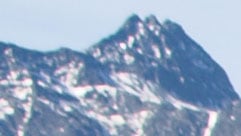 |
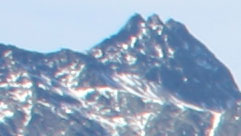 |
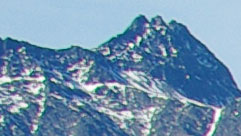 | ||
f8, 100 ISO |
f8, 100 ISO |
f8, 100 ISO | ||
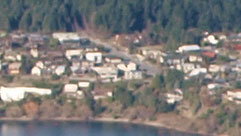 |
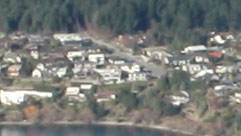 |
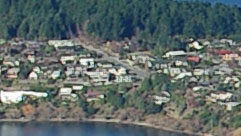 | ||
f8, 100 ISO |
f8, 100 ISO |
f8, 100 ISO | ||
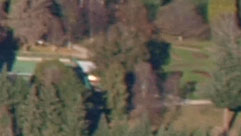 |
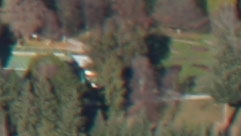 |
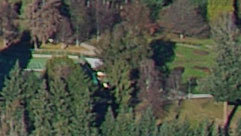 | ||
f8, 100 ISO |
f8, 100 ISO |
f8, 100 ISO | ||
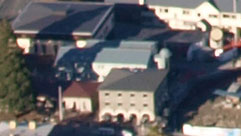 |
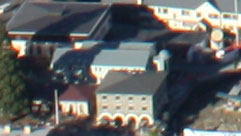 |
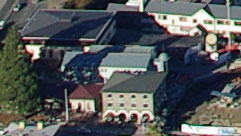 | ||
f8, 100 ISO |
f8, 100 ISO |
f8, 100 ISO |




